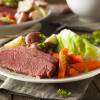It’s not your imagination. Rosé wines are everywhere. Peruse the wine list of your favorite restaurant or drop by any wine shop, and you can’t miss the parade of pinks. This season, the pros are recommending bottles that pair not only with fish and fowl, but with meatier fare hot off the grill.
These days, most rosé is a far cry from your grandmother’s sweet blush wine. Sporting hues that range from the palest pink to coppery salmon, these pours are dry, moderate in alcohol, and offer snappy acidity that makes them splendid with food.
A growing number of these pink pours emphasize texture. That feeling of gentle but noticeable grip comes from tannins, naturally occurring polyphenols found in grape skins. A glass of rosé doesn’t offer as much tannin or body as red wine, so serving it alongside a rare steak may not suit. But it’s good with almost everything else, making it one of the most versatile pours around.

Jonathan Rodrigues has seen pinks like these surge since he began his wine career almost a decade ago at Top of the Hub in Boston’s Prudential Tower. Now the wine director at Del Frisco’s Double Eagle Steak House in Boston’s Seaport District, he notices that more of his customers regard these wines as dry and food friendly. “Now people seek out regions and styles of rosé,” he says, noting that some guests will ask specifically for a pink from California or a sparkling version from France.
Rodrigues is keen on showcasing how these wines complement a variety of fare. At a recent tasting featuring sips and bites from the restaurant’s new menu, he pours splashes of three pinks: one strawberry-hued bubbly from New Mexico; one light, classic style from Provence; and a copper-hued pour from Oregon. The one from the Pacific Northwest stands out with a braised short rib slider, featuring a robust cut of beef that’s roasted low-and-slow, shredded, lightly sauced, and nestled on a buttery brioche bun. “That’s my favorite with the slider,” he says of the wine, enthusing about how its body and texture make it the heartiest of the three. As he talks, we’re already musing about how delicious this mineral and peach-scented pour would be with roast chicken with crackling-crisp skin, grilled Italian sausages, or sweet red bell peppers, seared over flame and edged with char.

That winning bottle turns out to be a 2015 High Hook Pinot Noir Rosé, crafted from fruit grown and vinified in Oregon’s Willamette Valley by winemaker Stephen J. Cary.
The president of the High Hook Wines is Mark Seymour, retired from a 30-plus year career on the distribution side of the wine business. He resides in Leverett, Massachusetts, so getting in touch about the wine turns out to be easy.
The name of the wine and the label’s handsomely illustrated striped bass both point to Seymour’s love of fly fishing. He spends ample time in Cape Cod indulging that passion. A portion of the proceeds from every bottle goes to local organizations promoting conservation and environmental education.
“Rosé can be made two ways,” he says, explaining how one approach blends red wine with white wine — a method he calls “tacky but legit.” The method he prefers — and the way he and Cary insist on doing it — takes more care and intention. Pinot noir grapes are gently crushed, and juice is left to macerate on the skins at cool temperatures. Those grape skins lend both color and a subtle sense of tannic grip. The resulting juice is then drained from the skins and goes on to ferment and age in stainless steel. A tiny portion is matured in neutral oak, then blended with the rest of the batch. “Rosé is white wine made from red grapes,” Seymour says, referring to the white wine technique of fermenting apart from the skins.

For Seymour, this wine venture is no mere lark. “My idea is to make wines that express fruit, the terroir (the place where the grapes are grown) and the vintage year,” he explains. “That’s why we try to let the grapes be what they want to be.” He notes that the 2015 vintage was quite warm and resulted in very ripe fruit. This translates into a little more body than the previous year.
While other producers might alter the wine so it mirrors prior vintages, Seymour won’t have that. “Let the wine tell the truth,” he says firmly.
Truth be told, this rosé is already making grilling season more delicious.
High Hook Pinot Noir Rosé 2015 is poured at Del Frisco’s Double Eagle Steak House ($12 a glass, $48 a bottle) at 250 Northern Ave., Boston, 617-951-1368, delfriscos.com.
It retails for around $20 at
Giles Wine & Spirits
, Woburn, 781-933-0932, and
Wine Gallery
, Brookline, 617-277-5522.




